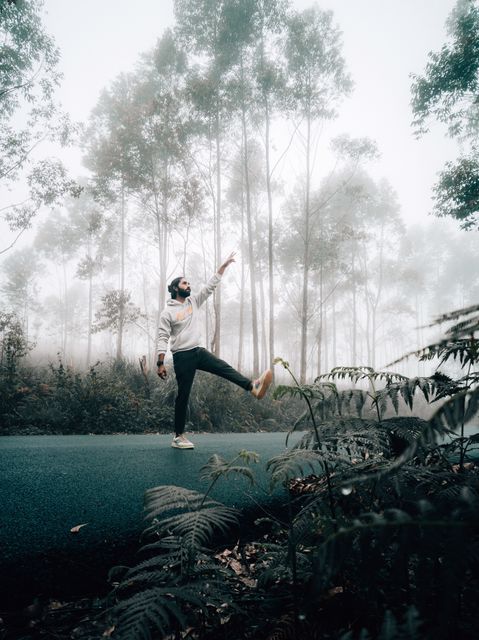
In responses to my previous blog, several people commented about their own struggles with listening as a spiritual practice. Listening in this way can be a challenge because, as Henri Nouwen states, “it asks of us so much interior stability that we no longer need to prove ourselves by speeches, arguments, statements, or declarations. True listeners no longer have an inner need to make their presence known. They are free to receive, to welcome, to accept” (Bread for the Journey: A Daybook of Wisdom and Faith).
This kind of listening is a challenge, but it is also an amazing gift that we can offer to others, to the world, and to ourselves. Since it can be a challenge to listen to someone who is so different from us, here are some simple ways to do listening as a spiritual practice.
Music is a simple but powerful invitation to listening.
We have all had the experience of hearing a song that sparks a memory. More than a simple remembering, the power of the music can make us feel transported back to that moment with all its images, thoughts, and feelings. And yet, quite often, music is something that we play in the background while doing something else.
Find some moments to experience the evocative power of music.

I have a playlist of music that is especially meaningful to me. Over the last few weeks, in the morning as I drink my coffee and begin my day, I listen to one song on the playlist. For those few minutes, I give myself over to the music. I receive the gift that the music has to offer me.
The songs on the playlist are quite eclectic, coming from a variety of genres and musical traditions. Classical. Traditional music from a variety of ethnic groups. Here is the song I listened to this morning.
Choose some moments to practice mindfulness of sound.
These moments can be a few minutes between tasks or you can set an intention to be mindful of the sounds around you for a period of time. Just like music can be playing in the background while we do other tasks, there is a whole symphony of sound that surrounds us if we listen.
I play golf two or three times a week, so it has become part of my routine. Just the other day I became aware of how I was so focused on my game that I was missing the sounds around me. So, I stopped for just a moment and listened. A dog barking. A roofer pounding nails. The wind blowing.
Part of practicing mindfulness of sound is listening without the labels. Several years ago, I was teaching a group this practice. We were outside, and the instructions were simple. Listen and be present to the sounds you hear. When I asked them what they had heard, they said things like a train whistle, a car driving by, or a child laughing on the playground.
I asked them, “What did you do after you had named what you were hearing?” Most of them said, “Well, I went on to the next sound.” Which means, they had stopped listening. Once we name something and give it a label, we think we have exhausted it. We move on to what’s next.

So, we did the exercise again. I invited them to set the label aside and really listen to the sound. Their sharing was very different this time. One person spoke of the layers of tones in what before was just a train whistle. Another person spoke of the lilting sounds in what before was just a child’s laughter.
Hopefully, some of these simple acts of listening can prepare us for the challenge of listening to others, especially those who see the world differently that we do.
Consider doing a conversation verbatim.
Clinical Pastoral Education (CPE) is a training program for learning how to be more fully present in practicing pastoral care. This training usually took place in a hospital setting. One of the exercises required of us is to write verbatims of our visits with patients. After a visit with a patient, I would record, as best I could, the conversation. This could be a visit with a patient I found especially meaningful or especially difficult.
I would go through this verbatim with my supervisor. He would ask me questions that invited me to consider how I was being present with the patient and what might be getting in the way of me being present. Or what was happening that allowed me to be present a deeper way. It was an incredible, if not sometimes humbling, learning experience.
So what would it be like to write a verbatim of an interaction between you and another person.
Think about a challenging and difficult conversation between you and a person who sees the world very differently. Or for the purposes of this practice, go out and have a conversation with someone like this. When you are done, write out a verbatim of the conversation. You don’t have to get the words exactly, but do your best to capture what each of you say. Write it out like a dialogue or a script.

Now go back and read the verbatim. Put yourself back into the conversation. Pause along the way and ask yourself questions to explore the depth of your listening and connection. This was a difficult exchange; what was I thinking and feeling here? Was I creating space for the other person to share? If I was closing down that space, why? What could I have done differently?
You don’t have a supervisor, but it might be meaningful to reflect on this verbatim in a conversation with a trusted friend.
We live in a world where listening as a spiritual practice is rare, and yet when someone really hears you, or you hear someone, without passing judgment but really seeking to understand, it builds a strong connection. I look forward to hearing about your own experiences with the spiritual practice of listening.
